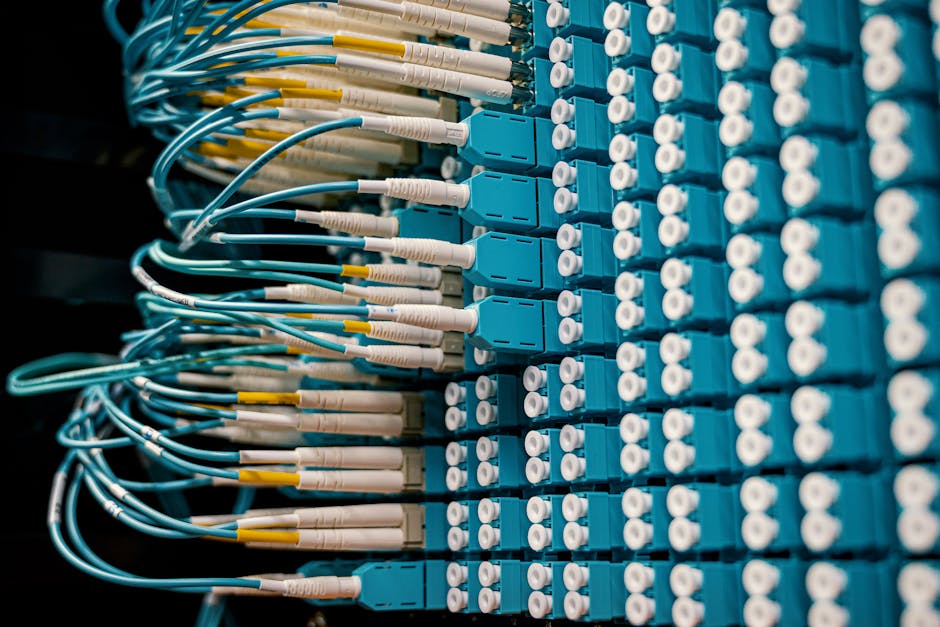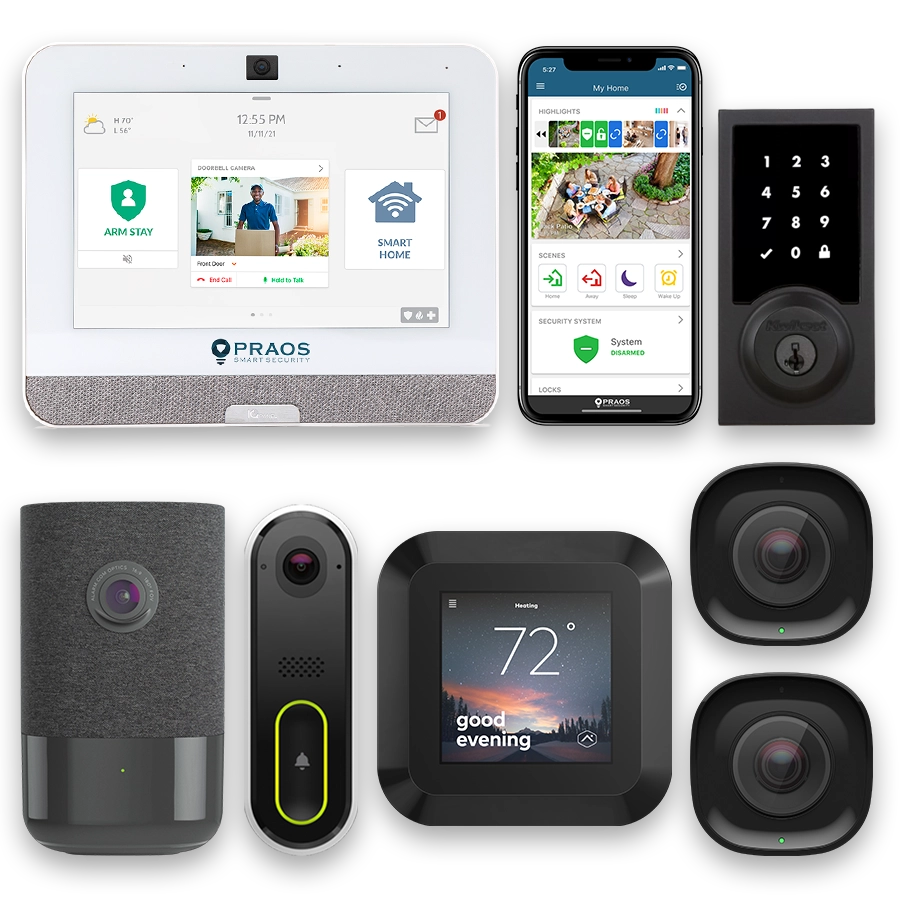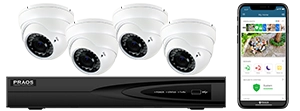- Introduction to Solar-Powered Security Systems
- Technological Advancements in Solar-Powered Surveillance
- Benefits of Solar-Powered Security Systems for Homes
- Advantages for Businesses and Commercial Properties
- Cost-Effectiveness and Financial Incentives
- Environmental Impact and Sustainability
- Case Studies of Successful Implementations
- Future Trends and Innovations in Solar-Powered Security
Introduction to Solar-Powered Security Systems
Solar-powered security systems represent a significant advancement in the home and business surveillance industry, leveraging renewable energy to operate effectively and reliably. These systems utilize solar panels to harness sunlight, converting it into electrical energy, which is then used to power surveillance equipment. This innovation ensures consistent operation, even in remote or off-grid locations where traditional power sources may be unreliable or unavailable.
One of the fundamental components of a solar-powered security system is the solar panel itself. These panels are typically composed of photovoltaic (PV) cells that capture solar energy. The efficiency of these cells has improved markedly in recent years. According to the National Renewable Energy Laboratory (NREL), modern solar panels can achieve efficiency rates of up to 22%, significantly enhancing the viability of solar-powered solutions for security purposes.
The generated electricity is often stored in batteries, ensuring continuous operation during periods of low sunlight, such as nighttime or overcast conditions. These batteries are designed to store ample energy to keep the system running without interruption. Advances in battery technology, particularly the development of lithium-ion batteries, have improved energy storage capabilities, making solar-powered systems more reliable. According to data from the U.S. Energy Information Administration (EIA), the cost of lithium-ion batteries has decreased by about 85% over the past decade, making these systems more cost-effective.
The deployment of solar-powered security systems aligns with growing consumer awareness and demand for sustainable solutions. These systems not only reduce dependence on non-renewable energy sources but also contribute to reduced greenhouse gas emissions. A report by the International Energy Agency (IEA) highlights that solar power is a key element in achieving global energy sustainability goals, with solar PV installations growing at a rate of approximately 20% annually.
To illustrate the components and their functions, consider the following table:
| Component | Function |
|---|---|
| Solar Panels | Capture and convert sunlight into electrical energy. |
| Batteries | Store electrical energy for use during low sunlight periods. |
| Charge Controller | Regulates the flow of energy to prevent overcharging of batteries. |
| Surveillance Equipment | Cameras, sensors, and other devices used for security monitoring. |
In conclusion, solar-powered security systems offer a practical and eco-friendly alternative to traditional surveillance solutions. Supported by technological advancements and declining costs, these systems are poised to play a critical role in modern security infrastructure, providing reliable and sustainable surveillance for homes and businesses alike.
Technological Advancements in Solar-Powered Surveillance
Solar-powered security systems have significantly evolved over the past few years, driven by advancements in various technologies that have enhanced their efficiency, reliability, and affordability. These advancements encompass improvements in solar panel technology, energy storage solutions, and the integration of smart technologies. Here, we explore some of these key technological breakthroughs.
Solar Panel Technology
One of the most notable advancements in solar-powered surveillance is the development of more efficient solar panels. Modern photovoltaic (PV) panels now boast conversion efficiencies of over 20%, meaning they can convert a greater portion of sunlight into usable electrical energy. This improvement allows for smaller panels to generate sufficient power, making them more versatile for various mounting options.
Additionally, the introduction of bifacial solar panels, which capture sunlight on both sides, has further increased the potential energy output. These panels can harness reflected light from surfaces like building walls and the ground, leading to up to 30% higher energy yields compared to traditional single-sided panels.
Energy Storage Solutions
The ability to store energy efficiently is crucial for the effectiveness of solar-powered security systems, particularly in areas with inconsistent sunlight. Advances in lithium-ion battery technology have played a significant role in this regard. Modern lithium-ion batteries offer higher energy densities, longer life spans, and quicker charging times compared to their predecessors.
Moreover, the development of solid-state batteries represents a promising future direction. These batteries possess even higher energy densities and are safer, with a lower risk of overheating or catching fire. Enhanced battery management systems (BMS) also monitor and optimize the charge and discharge cycles, extending the operational life of the batteries.
Smart Technologies Integration
The integration of smart technologies has revolutionized solar-powered security systems, making them more intuitive and user-friendly. Key advancements include:
- AI and Machine Learning: Modern security systems leverage artificial intelligence to analyze video footage in real-time, distinguishing between normal activity and potential threats. This reduces false alarms and enhances overall system efficiency.
- Internet of Things (IoT): IoT connectivity allows these systems to be monitored and controlled remotely via smartphones and other devices. Users can receive instant alerts, view live feeds, and manage system settings from anywhere.
- Wireless Technology: Advances in wireless communication have facilitated the development of completely wire-free security solutions. This eliminates the need for extensive cabling, simplifying installation and reducing associated costs.
Durability and Weather Resistance
Solar-powered security systems are now built to withstand harsh environmental conditions. Innovations in materials and design have led to the creation of weather-resistant and durable panels and enclosures. Many systems are rated with Ingress Protection (IP) codes, ensuring they are resistant to dust and water ingress, suitable for diverse geographic locations.
These technological advancements collectively contribute to the growing adoption and enhanced performance of solar-powered security systems, positioning them as a viable and increasingly preferable option for home and business surveillance.
Benefits of Solar-Powered Security Systems for Homes
Solar-powered security systems offer a range of benefits when implemented in residential settings. These advantages make them a compelling option for homeowners looking to enhance their surveillance capabilities while minimizing their carbon footprint.
One of the most significant benefits of solar-powered security systems is their energy independence. By harnessing energy from the sun, these systems can operate without relying on the electrical grid. This ensures that the security system remains functional during power outages, which is critical for maintaining continuous surveillance and enhancing overall home security.
Another benefit is the potential for cost savings on utility bills. Traditional security systems are powered by electricity, which adds to a household’s energy consumption. In contrast, solar-powered systems draw energy from the sun, reducing reliance on grid power and lowering energy costs over time. While there are upfront costs associated with purchasing and installing solar panels, the long-term savings on electricity bills can be substantial.
Solar-powered security systems are also known for their low maintenance requirements. Solar panels have few moving parts and are generally designed to withstand various weather conditions. This durability translates to less frequent need for repairs and lower maintenance costs compared to conventional systems.
In addition, the flexibility of installation makes solar-powered security systems an attractive option for homeowners. These systems do not require extensive wiring or proximity to electrical outlets, allowing for installation in a variety of locations, including remote areas of a property that might otherwise be challenging to secure.
Another notable benefit is their environmental impact. By using renewable energy, solar-powered security systems reduce greenhouse gas emissions and decrease the environmental footprint of home surveillance. This aligns with the growing trend of sustainable living and the increased awareness of environmental responsibility among consumers.
Moreover, the presence of a solar-powered security system can potentially increase property value. Homes equipped with environmentally friendly technologies are often more appealing to potential buyers. This can make the investment in a solar-powered security system a wise choice for homeowners who may consider selling their property in the future.
In summary, the energy independence, cost savings, low maintenance, flexible installation, environmental benefits, and potential to increase property value all contribute to the advantages of solar-powered security systems for residential use. These systems provide not only enhanced security but also align with broader goals of sustainability and energy efficiency.
Advantages for Businesses and Commercial Properties
Businesses and commercial properties can significantly benefit from the implementation of solar-powered security systems. One of the primary advantages is the ability to maintain continuous surveillance without the dependency on the electrical grid, ensuring security during power outages or in remote locations where traditional power sources may be unreliable or unavailable.
Cost Efficiency
Solar-powered security systems can lead to considerable savings on electricity bills. While the initial setup costs for solar panels and associated equipment might be higher compared to conventional systems, the operational costs are significantly lower. Over time, businesses can recuperate their investments and even generate a positive return through decreased energy expenses.
Reduced Operational Downtime
Many commercial properties operate around the clock, and consistent surveillance is crucial for their security management. Solar-powered systems ensure uninterrupted functionality by leveraging battery storage solutions that store excess power generated during the day, providing energy during the night or cloudy days.
Remote and Large-Scale Coverage
For businesses with expansive properties, such as agricultural operations, warehouses, or large corporate campuses, solar-powered security systems offer the flexibility to install cameras and sensors in remote locations without the need for extensive wiring. This minimizes installation time and costs while providing comprehensive coverage across the entire property.
Environmental Responsibility
Adopting solar-powered security systems aligns with corporate social responsibility (CSR) goals by reducing carbon footprints. This not only improves a company’s public image but also meets regulatory requirements and sustainability targets set by governmental bodies or industry standards.
Scalability and Flexibility
Solar-powered systems are modular and scalable, making it easier for businesses to expand security coverage as their needs grow. Additional panels and cameras can be added without major overhauls to the existing infrastructure, providing a future-proof solution.
In summary, the adoption of solar-powered security systems in commercial properties provides a multitude of benefits including cost savings, operational efficiency, comprehensive coverage, environmental stewardship, and scalability. These attributes make it an attractive option for businesses looking to enhance their security measures sustainably and effectively.
Cost-Effectiveness and Financial Incentives
One of the primary considerations for installing any security system is cost. Solar-powered security systems offer a unique cost advantage, primarily derived from their ability to utilize renewable energy sources.
Initial Investment vs. Long-Term Savings
The initial financial outlay for solar-powered security systems can be higher compared to traditional systems. This is due to the cost of solar panels, batteries, and other necessary components. However, these systems can lead to significant long-term savings.
Traditional security systems rely on electricity from the grid, which translates to continuous energy costs. In contrast, solar-powered systems harness sunlight, a free and abundant resource, thereby reducing monthly electricity expenses. This transition from conventional energy sources to solar power can result in noticeable cost savings over time.
Breakdown of Costs
To better illustrate the cost dynamics, let’s compare the costs involved in installing and maintaining traditional versus solar-powered security systems:
| Cost Factor | Traditional Security System | Solar-Powered Security System |
|---|---|---|
| Initial Installation | $1,000 – $5,000 | $2,000 – $7,000 |
| Monthly Energy Costs | $10 – $30 | $0 |
| Maintenance | $50 – $200/year | $100 – $300/year |
Financial Incentives
Government incentives and rebates can further enhance the cost-effectiveness of solar-powered security systems. Various federal, state, and local programs offer financial support to encourage the adoption of renewable energy technologies, including:
- Investment Tax Credit (ITC): A federal tax credit that allows homeowners and businesses to deduct a significant percentage of the installation cost of a solar system from federal taxes.
- State-Specific Incentives: Numerous states provide additional tax credits, rebates, or grants to promote solar energy adoption.
- Solar Renewable Energy Certificates (SRECs): In some regions, system owners can earn SRECs for the electricity generated by their solar systems, which can then be sold to utility companies to meet renewable energy requirements.
These financial incentives can substantially lower the initial investment costs, making the transition to solar-powered security systems more affordable and attractive.
Return on Investment (ROI)
The return on investment for solar-powered security systems can be significant when considering the combined benefits of energy savings and financial incentives. According to the National Renewable Energy Laboratory (NREL), the average payback period for residential solar installations ranges from 5 to 15 years, depending on local energy prices and available incentives.
For businesses, the ROI can be even more compelling due to higher energy consumption and the potential for larger installations, generating greater savings and more substantial tax benefits.
Environmental Impact and Sustainability
The adoption of solar-powered security systems has notable implications for environmental sustainability. Traditional security systems primarily rely on grid electricity, which often involves the use of fossil fuels for power generation. In contrast, solar-powered systems harness energy from the sun, a renewable resource with minimal environmental impact.
Reduction in Carbon Footprint
One of the most significant environmental benefits of solar-powered security systems is the reduction in carbon emissions. Conventional energy sources, particularly fossil fuels like coal and natural gas, emit substantial amounts of carbon dioxide (CO2) and other greenhouse gases into the atmosphere. According to the U.S. Environmental Protection Agency (EPA), the electricity sector is a major contributor to greenhouse gas emissions in the United States. By utilizing solar energy, security systems can operate without producing these harmful emissions, thereby reducing the overall carbon footprint.
Energy Independence and Reduced Strain on Power Grids
Solar-powered security systems offer energy independence by generating their own electricity. This reduces the dependency on centralized power grids and decreases the strain on these grids, particularly during peak usage times. The reduction in demand on grid infrastructure can result in fewer power outages and lower maintenance costs for power providers. Additionally, decentralized energy sources like solar panels can support the stability of the energy grid, making the overall energy system more resilient.
Conservation of Natural Resources
Traditional energy production often involves the extraction and consumption of finite natural resources such as coal, natural gas, and oil. Solar energy, on the other hand, relies on sunlight, which is abundant and inexhaustible. By implementing solar-powered security systems, there is a significant reduction in the extraction and depletion of these natural resources. This not only conserves vital materials but also minimizes the environmental degradation associated with mining and drilling activities.
Minimization of Electronic Waste
Traditional security systems require routine maintenance and part replacements, which contributes to electronic waste. Solar-powered systems, however, typically have longer lifespans and require less frequent maintenance. Modern solar panels can last 25 to 30 years, and many components of solar-powered systems are recyclable. According to the International Renewable Energy Agency (IRENA), proper management of solar panel waste could lead to a significant reduction in electronic waste, further supporting environmental sustainability.
- Long lifespans of solar panels contribute to fewer replacements and less waste.
- Recyclability of solar system components alleviates the environmental burden.
Promotion of Renewable Energy Technologies
The adoption of solar-powered security systems also promotes the broader use and acceptance of renewable energy technologies. As more homes and businesses integrate solar solutions into their infrastructure, the demand and market for renewable energy technologies grow. This can lead to increased investment in research and development, driving innovations that enhance the efficiency and affordability of solar technologies.
Overall, the integration of solar-powered security systems signifies a positive step towards environmental sustainability. By reducing carbon emissions, conserving natural resources, minimizing waste, and encouraging the adoption of renewable energy, these systems play a crucial role in protecting both properties and the planet.
Case Studies of Successful Implementations
Several successful implementations of solar-powered security systems across various settings have demonstrated their efficacy and adaptability. These case studies highlight the practical benefits and the broad range of applications, from residential neighborhoods to business complexes and public infrastructure.
Residential Areas
A noteworthy example can be found in Fresno, California, where a neighborhood association sought to enhance community security. The association installed a series of solar-powered surveillance cameras at strategic entry and exit points. These installations led to a significant reduction in incidents of burglary and vandalism, as the high-quality footage provided local authorities with valuable evidence.
Commercial Properties
In the retail sector, a large shopping mall in Scottsdale, Arizona, implemented a solar-powered security system to monitor parking lots and exterior premises. This decision was driven by the need to ensure customer safety and protect against vehicle theft and property damage. As a result, the mall experienced a drop in crime rates, and operational savings were achieved through reduced reliance on conventional power sources.
Public Infrastructure
The City of San Diego, California, adopted solar-powered security systems to monitor public parks and recreational areas. These solar-powered systems allowed for 24/7 surveillance without the need for extensive cabling or electrical infrastructure. This initiative not only improved the safety of public spaces but also demonstrated the city’s commitment to sustainability, aligning with broader environmental goals.
Rural and Remote Locations
In rural parts of Montana, a series of small agricultural communities faced challenges in securing remote farm properties. By installing solar-powered cameras with cellular connectivity, these communities were able to monitor vast areas without the need for grid electricity. This setup proved particularly effective during off-peak hours and in adverse weather conditions, providing farmers with peace of mind and reducing the risk of equipment theft.
Critical Infrastructure
Security agencies have also turned to solar power for protecting critical infrastructure, such as water treatment plants and power substations. In Dallas, Texas, solar-powered surveillance helped secure a major water treatment facility. These systems provided reliable monitoring capabilities and enhanced the facility’s security posture against potential threats without the constraints of traditional wiring and power supply issues.
These real-world implementations illustrate the versatility and effectiveness of solar-powered security systems in diverse environments. They emphasize the technology’s ability to provide sustainable, reliable security solutions across a wide range of applications.
Future Trends and Innovations in Solar-Powered Security
The future of solar-powered security systems is set to evolve with significant technological advancements and market trends, potentially transforming the landscape of home and business surveillance even further.
One of the key emerging trends is the integration of Artificial Intelligence (AI) and Machine Learning (ML) algorithms in surveillance cameras. These technologies will enhance the ability of security systems to identify and react to potential threats more accurately. AI can be combined with solar-powered cameras to continuously analyze visual data, enabling real-time anomaly detection, facial recognition, and pattern analysis without human intervention.
Another promising innovation is the development of more efficient solar panels and energy storage solutions. Advances in photovoltaic cell technology will likely improve the efficiency of solar panels, allowing them to convert sunlight into electrical energy more effectively. Additionally, enhancing battery technologies promises better energy storage capabilities, ensuring reliable power supply during periods of low sunlight and enhancing the longevity of surveillance systems.
Moreover, the growth of Internet of Things (IoT) devices is expected to play a significant role in the future of solar-powered security systems. IoT-enabled devices can facilitate seamless communication between various components of a security system, including cameras, sensors, and control panels. This interconnected infrastructure permits real-time data sharing and remote monitoring across different locations, improving overall security management.
The expansion of 5G technology is set to further boost the capabilities of solar-powered security systems. With faster and more reliable internet connectivity, 5G will enable high-definition video streaming and rapid data transmission, which are essential for advanced surveillance functions and quicker response times.
Lastly, increasing concerns about cybersecurity and data privacy are likely to drive the development of more secure communication protocols and better encryption methods for solar-powered security systems. As these systems become more sophisticated and interconnected, protecting sensitive data and ensuring the integrity of the surveillance infrastructure will be paramount.
In summary, the future of solar-powered security systems looks promising with the integration of AI and ML, advancements in solar and battery technology, the proliferation of IoT devices, the advent of 5G connectivity, and enhanced cybersecurity measures. These innovations will collectively contribute to more efficient, effective, and reliable home and business surveillance solutions.






